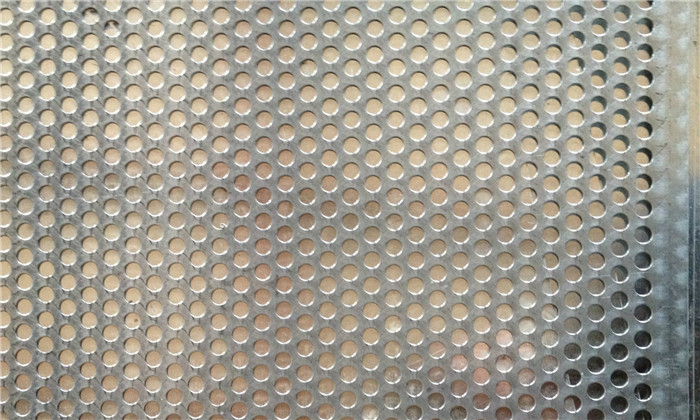Detailed Comparison Between Stainless Steel Perforated Sheet and Zinc Coated Perforated Sheet
Source:www.cn-psp.cnAuthor:河北森驰公司 Last updated:2025-06-14 14:19:55 Browse:
In the fields of industrial manufacturing, architectural decoration, mechanical equipment, and environmental protection, perforated sheets are widely used. Among the many material choices, stainless steel perforated sheet and zinc coated perforated sheet are two of the most common types. Although they may look similar in appearance, there are substantial differences in their materials, performance, application, and cost. Today, Anping County Senchi Perforated Screen Factory will provide an in-depth analysis of the differences between stainless steel perforated sheet and zinc coated perforated sheet to help you make a more informed selection.
1. Difference in Raw Materials
As the name suggests, stainless steel perforated sheet is made from stainless steel plates through punching processes. Common grades include 304 and 316 stainless steel, which are rich in chromium (Cr) and nickel (Ni), offering excellent corrosion resistance and oxidation resistance. These sheets are ideal for environments with high humidity or strong acid-alkali exposure.
On the other hand, zinc coated perforated sheet is produced from ordinary carbon steel with a surface treatment of hot-dip or electro-galvanization, forming a protective zinc layer. While this layer provides some degree of rust protection, its corrosion resistance is not as strong as that of stainless steel.
2. Appearance and Surface Color
From a visual standpoint, the two perforated sheets differ significantly. Stainless steel perforated sheet usually appears dark gray before polishing, and after surface treatment such as brushing or mirror polishing, it shows a high-end matte or shiny silver finish. In contrast, zinc coated perforated sheet has a bright silver-white surface with metallic luster, but it tends to oxidize and darken over time, especially in humid environments.
3. Physical Performance
In terms of hardness, wear resistance, and tensile strength, stainless steel perforated sheet outperforms its zinc-coated counterpart. It is highly durable and impact-resistant, making it suitable for applications requiring strong mechanical properties. Zinc coated perforated sheet, while more flexible and easier to bend, is generally used in situations where strength requirements are moderate, but cost considerations are high.

Perforated sheet
4. Magnetic Properties
Magnetism is also a simple way to differentiate the two materials. Most stainless steel perforated sheets, particularly those made of 304 stainless steel, are non-magnetic or only slightly magnetic. In contrast, zinc coated perforated sheets are made from carbon steel, which is strongly magnetic and can be easily attracted by a magnet.
5. Significant Price Gap
Price is a critical factor in material selection. Due to the superior material properties and higher production costs, stainless steel perforated sheet is generally 4 to 5 times more expensive than zinc coated perforated sheet. This makes zinc-coated sheets a more budget-friendly option for non-critical or short-term applications.
6. Application Scenarios
Stainless steel perforated sheet is ideal for: food processing equipment, chemical equipment enclosures, exterior wall cladding, hygiene-sensitive areas, precision filtration, and other demanding environments.
Zinc coated perforated sheet is commonly used in: storage shelving, protective guards, ventilation covers, ceiling decoration, speaker grilles, and advertising frames where high corrosion resistance is not essential.
7. Service Life Comparison
Under normal usage conditions, stainless steel perforated sheets can last over 20 years, often even longer. In contrast, zinc coated perforated sheets have a typical lifespan of 5 to 10 years, depending on environmental factors such as humidity and chemical exposure.
Conclusion:
Although stainless steel perforated sheet and zinc coated perforated sheet can sometimes be used interchangeably, their differences in performance, appearance, price, and application range are substantial. Choosing the right material depends on your specific environmental needs, structural requirements, and budget constraints. We hope this article has given you a comprehensive understanding of these two types of perforated sheets and will help you make smarter material decisions.
For more details about perforated sheet customization, pricing, and product specifications, feel free to contact Anping County Senchi Perforated Screen Factory. We are committed to providing professional solutions tailored to your needs.
